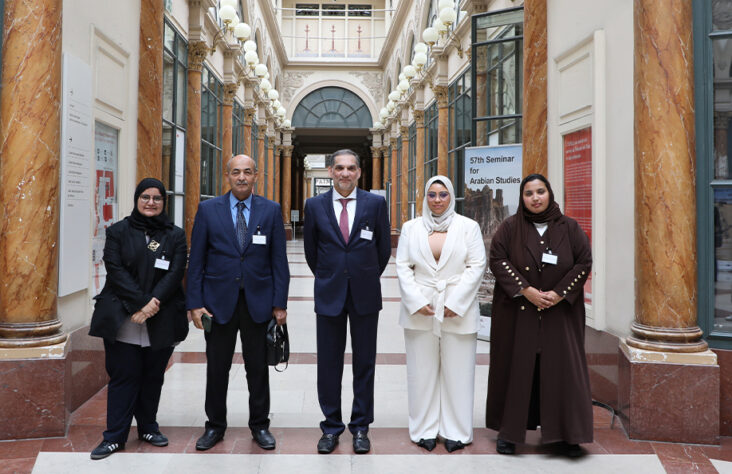Dubai Culture Showcases Dubais Archaeological Treasures In Paris

Dubai Culture and Arts Authority (Dubai Culture) has concluded its participation in the 57th Seminar for Arabian Studies organised by the International Association for the Study of Arabia (IASA) to enhance the exchange of ideas and perspectives among researchers and academics on the history, and civilisation of the Arabian Peninsula. This aligns with the Authority’s efforts to highlight the importance of Dubai’s archaeological and historical sites, in line with its sectoral priorities to cement the emirate’s presence on the global heritage map.
During the three-day conference hosted by the National Institute of Art History in Paris, the Authority’s delegation presented two scientific papers highlighting Dubai’s archaeological sites. The first research paper was titled ‘Iron Age Artefacts Hoard discovered at Saruq Al Hadid-53 Archaeological Site, Dubai-UAE,’ and the second ‘Soil Corrosivity at Saruq al-Hadid and Al Qusais Archaeological Sites in Dubai (UAE), and its Effect on Metal Objects, A Comparative Study.’
The first paper, presented by Mariam Al Suwaidi, Senior Archaeologist at Dubai Culture, discussed the history of the Saruq Al-Hadid site and the most significant artefacts discovered there, including a hoard considered one of the most important archaeological discoveries in the southeast Arabian Peninsula. It was found buried in a circular pit with a diameter of 90 cm and a depth of 50 cm at the Saruq Al-Hadid site, containing 123 mostly bronze artefacts, including various cooking pots, hoes, chisels, mirrors, axe heads, ladles, small cups, scales, and a fishing hook. Additionally, the hoard had two objects made of chlorite stone, a small cup, and a bowl, as well as seven iron finds: spearheads, a small handle, and a worked bone. The study proved that the site where the hoard was discovered was used for producing charcoal necessary for metalworking, a prominent craft of the inhabitants of the area during the Iron Age. The study also discussed the main methods used for dating the hoard, including carbon-14 analysis of charcoal samples, in addition to scientific comparisons and outlined future plans for work at the site.
The second paper, presented by Zainab Ali Salmin, Senior Archaeological Conservator at Dubai Culture, focused on a study to develop conservation and restoration methods of discovered artefacts at Al Qusais and Saruq Al- Hadid Archaeological Sites. It discussed the environmental states and the soil corrosivity at the two sites and its impact on buried metal artefacts, particularly bronze. The study showed that the soil at Saruq Al-Hadid has a lesser impact on bronze artefacts compared to the clay-saline sediment at Al Qusais, which differently affects the corrosion on the discovered items.
Bader Mohamed Al Ali, Director of the Antiquities Department at Dubai Culture, affirmed the Authority’s keenness to participate in all international forums and specialised scientific conferences in the field of archaeology, aiming to introduce Dubai’s archaeological sites and highlight their importance and value, saying: “International conferences are an inspiring space to highlight Dubai’s historical significance, making it a destination for researchers and archaeologists to explore the discoveries, enhancing the emirate’s global standing. Our participation in IASA’s Seminar for Arabian Studies contributes to providing a comprehensive view of Dubai’s capabilities and archaeological sites, facilitating the exchange of expertise and strengthening relations with international research institutes and excavation missions. Additionally, it enriches the historical and cultural knowledge of academics through the studies conducted by our teams in documenting and safeguarding the emirate’s archaeological heritage, raising awareness and understanding of the lifestyles experienced at these sites throughout different eras.”


